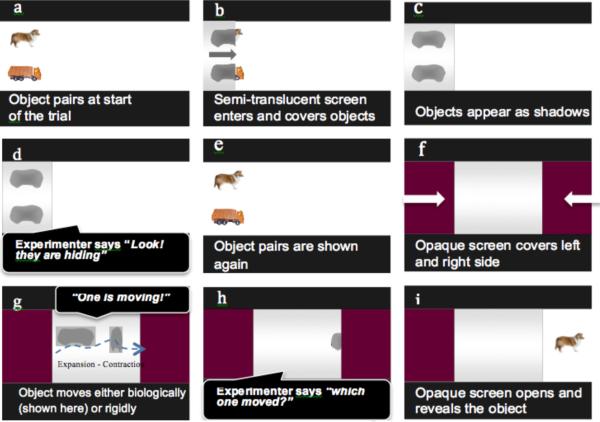Fig. 1.
Diagram of the schematic biological motion categorization task. Notes: Frames (a)–(f) show the familiarization phase, frame (g) shows the motion phase, frame (h) shows the test phase, and frame (i) provides children with feedback on their response. During the familiarization phase children are introduced to two identical shadows representing each response option. The shadows of each object (shown) were designed to be identical, yet resemble either response option as closely as possible. Children viewed one shadow move across the screen either animately by expanding and contracting (i.e., dog), or inanimately by sliding across the screen (i.e., truck) during the motion phase. At test, children are asked which they thought had moved.

